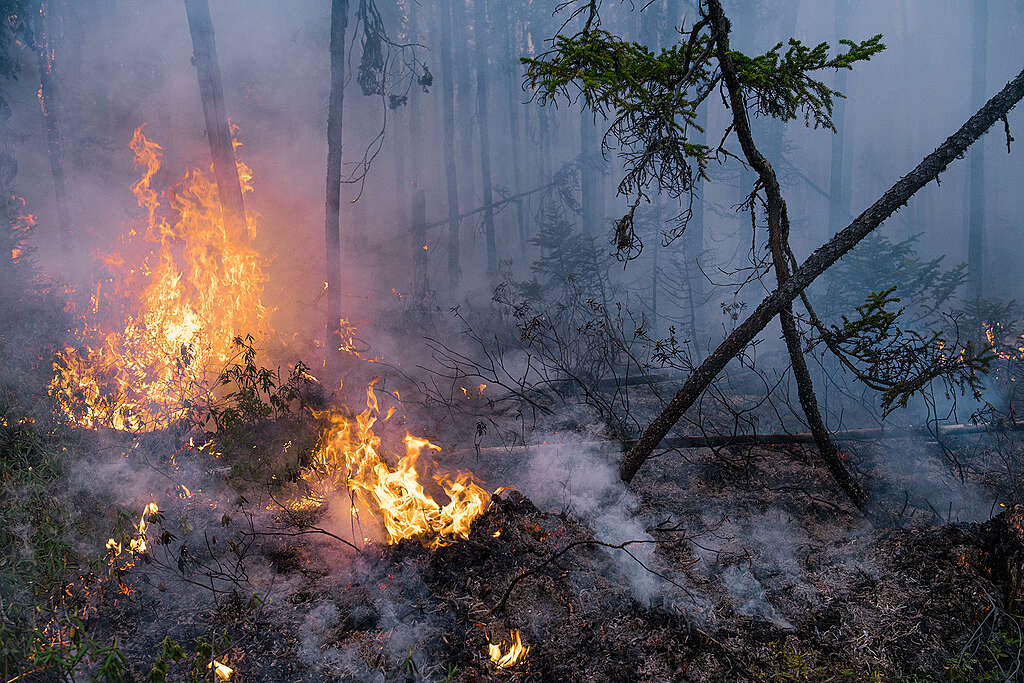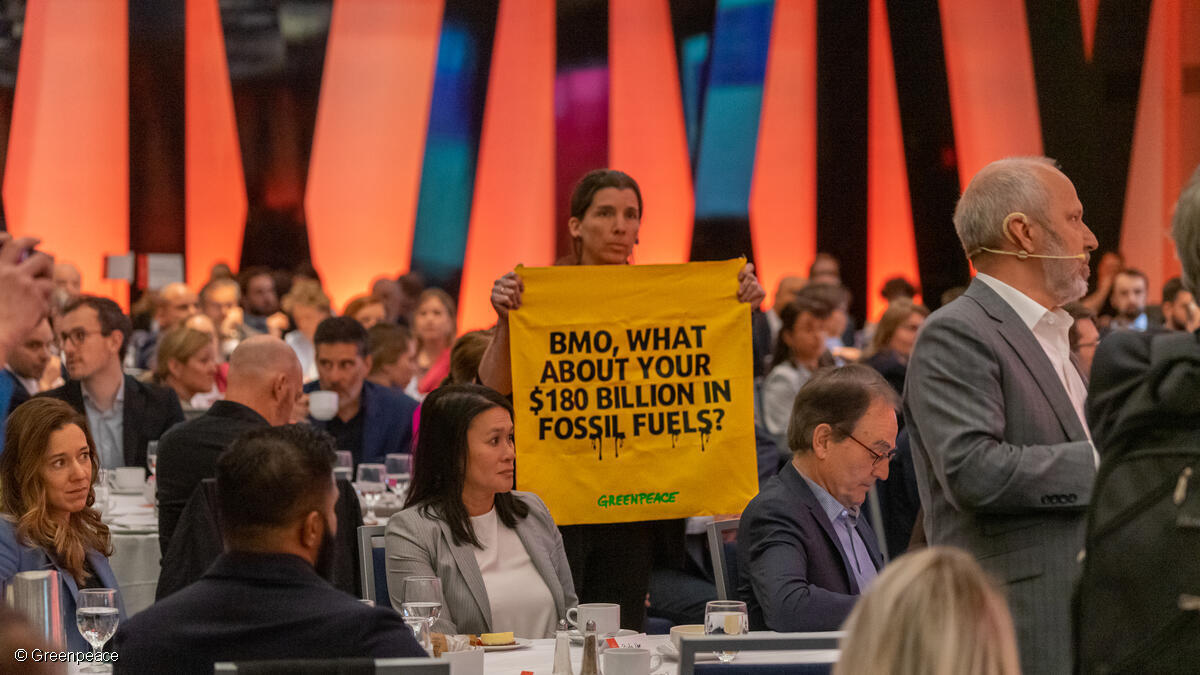
Last summer, Canada experienced its worst wildfire season on record with more than 18.5 million hectares of land burnt from coast to coast, placing close to 200,000 people under evacuation orders throughout the season. Toxic wildfire smoke blanketed cities across the Western hemisphere, turning New York City into an orange dystopian cityscape and making Canada the home of the top 13 most polluted cities in North America.
Natural Resources Canada predicts that the Canadian fire season will get longer in the future. Moreover, the UN reports that global wildfires will become more frequent and intense, with extreme fires increasing up to 30 percent by the end of 2050. Behind these terrifying trends is our changing climate. As emissions from oil & gas continue to increase, further exacerbating climate change, so do the conditions for more destructive wildfires.
So how exactly is climate change fuelling Canada’s extreme and destructive fires?
Hot Conditions Create Dry Fuel
Hot and dry days create fuel for forest fires. They dry out vegetation, such as grasses and trees, making it more likely to catch fire and stay burning.
Because of climate change, the number of hot days in Canada is growing. Human activities such as the burning of fossil fuels have released greenhouse gases into the atmosphere, causing the planet’s surface to warm.
In June 2021, a historic heat wave scorched parts of western Canada and the United States. A new record temperature for Canada of 49.6°C (almost 24°C higher than normal) was measured in Lytton, British Columbia, on June 29. Those hot and dry conditions helped set the stage for the devastating and fast-moving fire that began a day later, on June 30, which killed two people, ripped apart lives and destroyed many of the homes in the village and surrounding areas.
Last year, a “perfect storm” of dry vegetation, record temperatures and powerful winds fuelled the destructive fires that ravaged throughout Alberta in May, and that dangerously set the destructive tone for the rest of the wildfire season.
Lightning Strikes More Frequently
Nearly half of wildfires are started by lightning, and forest fires ignited by lightning represent more than 80% of the total area burned.
As climate change causes temperatures to rise, lightning storms are becoming more frequent. Some scientists predict an 80 percent increase in the lightning fire activities in Canada by the end of this century, which in dry and hot conditions would increase the likelihood of fires starting.
Fire Weather Fans the Flames
Hot and dry days make it easier for fires to intensify and spread once they start. “Fire weather” refers to weather conditions, including heat and dryness, that make the start and spread of fires more likely.
Because of climate change, snow melts earlier and frost comes later, more fire weather will extend the fire season.
A Dangerous Cycle
Climate change fuels forest fires, which, in turn, feed climate change. Canada’s forests absorb some of the carbon dioxide that is released when humans burn fossil fuels. But when the forests burn, much of that stored carbon dioxide gets released back into the air, accelerating climate change.
According to the Copernicus Atmosphere Monitoring Service, carbon emissions from Canada’s wildfires in 2023 reached 480 megatonnes, representing a record 23% of the total global wildfire carbon emissions for that year. By the end of the summer, last year’s wildfires were estimated to be three times the country’s annual carbon footprint for 2023, turning the forests from coast to coast from carbon sinks to “super-emitters”.
How do we slow the cycle?
In 2023, the wildfires in Quebec were made twice as likely due to the climate crisis. This year, an unusually warm winter, and forecasts of warm and dry spring and summer conditions were expected to increase the risks of severe wildfires at the start of summer.
An increase in extreme wildfires is becoming the new abnormal, destroying the homes and livelihoods of people and the habitats of animals, damaging air quality, and adding to greenhouse gas emissions. How can we douse the rising number of wildfires?
Firstly, we need to take a look at fire management. Colonial fire practices and laws of the Canadian government have contributed to worsening the wildfire seasons by displacing Indigenous communities from their lands and discarding Indigenous stewardship. Restoring Indigenous governance of land is an essential step towards preventing and managing these fires, as traditional Indigenous knowledge and land management are integral to the well-being of ecosystems, and communities living on these lands.
Secondly, we need to demand that big polluters urgently phase out and accelerate the transition away from fossil fuels in a just manner. Last year, a study by the Union of Concerned Scientists directly linked the worsening of wildfires across Western North America since 1986 to coal, oil and gas companies. Business-as-usual is no longer an option while communities are burning.
2023 was the hottest year ever recorded on Earth. Along with wildfires, other extreme weather events driven by climate change like floods, and heatwaves are destroying lives and livelihoods from coast to coast. By continuing to burn coal, oil and gas, fossil fuel companies are inflaming extreme weather, shamelessly reaping record profits off the destruction of the planet. In 2023, climate disasters in Canada caused over $3.1 billion in insured damages, and that’s without counting the indirect damages on health, livelihoods, and ecosystems–not to mention the increasing cost-of-living. The fossil fuel industry is responsible for the impacts of climate change and these major polluters must repair the damage they have been causing.
Join us in calling on the Canadian federal government to hold Big Oil accountable by making them pay into a new Climate Recovery Fund that would go directly to communities and local governments facing the brunt of the climate crisis and in need of financial support to repair, rebuild, and adapt to future climate change impacts.




Discussion
Petroeum products are the greatest contributor to climate warming. Time to cut back and produce more solar and wind power plus other alternatives. The heat waves and droughts are symptons of the potential and total devastation of our planet. Why should all living creatures suffer extinction due to the greed of a few companies and politicians who support them?
We should be applying the same strategy that was done on the tobacco industries. For each barrel of crude produced they need to pay a fee to support climate mitigation. For each disinformation they produce they need to be fined an appropriate amount that funds a program created to fight disinformation (i.e. tobacco advertising strategy). Bottom line is the players that create the climate harm to make "profit" should pay to mitigate the climate damage. Let us keep in our minds the same players that have brought us to this climate catastrophe by denying the problem are the one's that we should trust to solve the problem. Human's are fools and deserve what is coming to them. The wildlife on earth are the innocent and do not deserve this problem on top of the other habitat problems they are enduring. A hopeless situation.
About time oil billions funded climate recovery world wide!
I’ll be eighty in the fall and had expected in my lifetime to see some mitigation of humanity’s decimation of our planet. I’ve lived long enough to see the opposite in spite of all our scientific advances. I well remember when nylon socks were introduced and we thought they were a terrific idea because they were almost indestructible. Now, so many things are made of plastic and indeed they are indestructible and showing up in our water and in the bodies of all living things. This is just one of many crises facing our planet but like all others, they should have been dealt with yesterday. Now we humans and all other life forms with whom we share this planet, must face a daunting future and critical deadline. We have no choice!